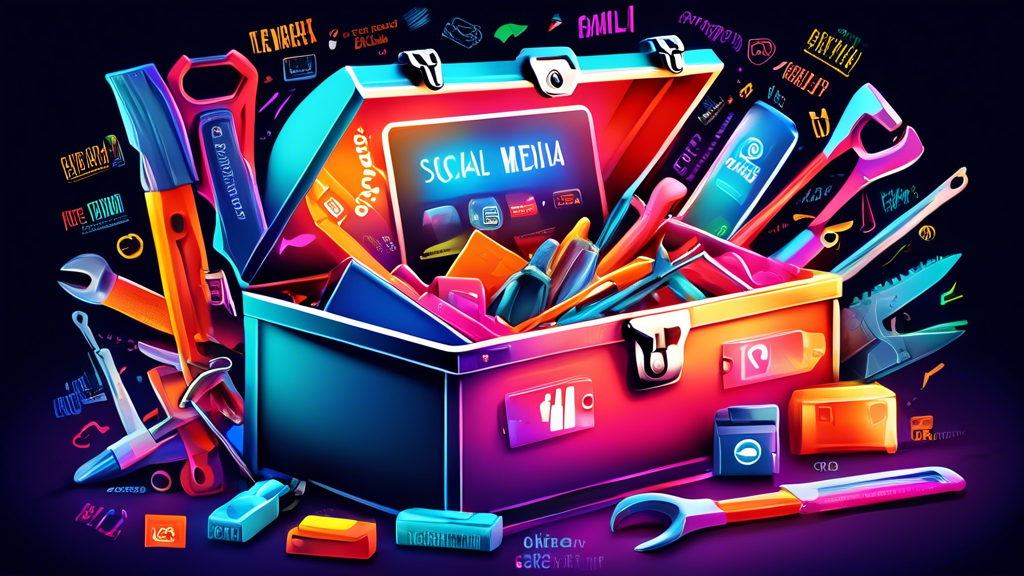Customer Engagement Driving Tools
In today’s hyper-competitive business landscape, customer engagement reigns supreme. It’s no longer enough to simply offer a great product or service; you need to build lasting relationships with your customers, fostering a sense of loyalty and advocacy that transcends mere transactions. But how do you effectively engage your customers in a meaningful way? This is where customer engagement driving tools come into play. These tools empower businesses to connect with their audience, personalize interactions, and build thriving communities around their brand.
Understanding Customer Engagement: Beyond the Buzzword
Before we delve into the specific tools, let’s establish a clear understanding of what customer engagement truly entails. It’s not just about fleeting likes or comments on social media; it’s about creating genuine interactions that resonate with your audience and encourage them to actively participate in your brand’s journey. True customer engagement is marked by:
- Active Participation: Customers go beyond passively consuming content; they actively engage with your brand, providing feedback, sharing their experiences, and participating in discussions.
- Emotional Connection: Customers feel a sense of connection with your brand, resonating with your values, mission, and overall story.
- Value Exchange: Interactions provide value to both the customer and the brand, fostering a mutually beneficial relationship.
The Arsenal of Engagement: Exploring Effective Tools
The realm of customer engagement tools is vast and diverse, catering to various aspects of the customer journey. Here’s a comprehensive look at some of the most effective tools at your disposal:
1. Social Media Platforms: The Engagement Hub
Social media platforms have become the epicenter of customer engagement, offering a dynamic space for businesses to connect with their audience. From Facebook and Instagram to Twitter and LinkedIn, these platforms provide a plethora of tools to spark conversations, share valuable content, and build a thriving community.
- Interactive Content: Polls, quizzes, and challenges encourage active participation and provide valuable insights into customer preferences.
- Live Videos and Q&A Sessions: Real-time interaction fosters a sense of immediacy and allows for direct engagement with customers.
- Social Listening Tools: Monitor brand mentions and industry conversations to understand customer sentiment and identify emerging trends.
2. Email Marketing: Personalized and Targeted Communication
Email marketing remains a cornerstone of customer engagement, allowing businesses to deliver personalized messages directly to their audience’s inbox. The key to effective email engagement lies in segmentation, personalization, and valuable content.
- Segmented Email Lists: Tailor messages based on customer demographics, purchase history, and interests to ensure relevance.
- Personalized Subject Lines and Content: Address customers by name and reference their specific interactions with your brand.
- Automated Email Sequences: Nurture leads, onboard new customers, and re-engage inactive subscribers with automated workflows.
3. Customer Relationship Management (CRM) Systems: Unifying Customer Data
CRM systems act as the central nervous system of customer engagement, consolidating all customer data into a unified platform. This holistic view allows for a deeper understanding of customer behavior, enabling personalized interactions across all touchpoints.
- Customer Segmentation and Profiling: Identify distinct customer groups based on shared characteristics to tailor engagement strategies.
- Personalized Recommendations and Offers: Leverage customer data to provide tailored product suggestions and exclusive offers.
- Customer Service Automation: Streamline support processes and provide timely resolutions to enhance customer satisfaction.
4. Content Marketing: Delivering Value and Building Authority
Content marketing fuels engagement by providing valuable information that resonates with your target audience. By creating high-quality content that addresses customer needs, you establish your brand as a trusted source of information, fostering a sense of loyalty and advocacy.
- Blog Posts and Articles: Share insights, tips, and industry updates to educate and engage your audience.
- Infographics and Videos: Present complex information in visually appealing formats to enhance understanding and encourage sharing.
- E-books and White Papers: Provide in-depth analyses and actionable advice to demonstrate your expertise and generate leads.
5. Chatbots and Live Chat: Real-Time Support and Engagement
In today’s fast-paced world, customers expect instant gratification. Chatbots and live chat features provide real-time support and answer questions on demand, enhancing customer satisfaction and fostering engagement.
- Automated Responses to Frequently Asked Questions: Provide instant answers to common queries, freeing up human agents for more complex issues.
- Personalized Interactions Based on Customer History: Tailor chatbot responses to reflect previous interactions and preferences.
- Seamless Transition to Human Agents: Ensure a smooth handover for more intricate issues requiring human intervention.
6. Customer Feedback Tools: Listening to Your Audience
Customer feedback is the lifeblood of engagement. By actively seeking and responding to feedback, you demonstrate your commitment to customer satisfaction and gain valuable insights to improve your offerings.
- Surveys and Polls: Gather structured feedback on specific aspects of your product or service.
- Online Reviews and Testimonials: Encourage customers to share their experiences publicly to build social proof and identify areas for improvement.
- Social Media Monitoring: Track mentions and conversations to understand customer sentiment and address concerns proactively.
7. Loyalty Programs and Rewards: Recognizing and Rewarding Engagement
Loyalty programs incentivize repeat business and encourage customers to actively engage with your brand. By rewarding loyal customers, you foster a sense of appreciation and incentivize continued interaction.
- Points-Based Rewards: Award points for purchases, social media interactions, and other forms of engagement.
- Tiered Loyalty Programs: Offer escalating benefits based on engagement levels, encouraging customers to strive for higher tiers.
- Exclusive Perks and Experiences: Provide unique rewards that go beyond discounts, such as early access to new products or invitations to exclusive events.
Measuring the Impact: Analyzing Engagement Metrics
Implementing engagement tools is just the first step; it’s crucial to track their effectiveness and measure the impact of your efforts. Key metrics to monitor include:
- Website Traffic and Engagement: Analyze website visits, bounce rates, and time spent on page to assess content effectiveness.
- Social Media Engagement: Track likes, shares, comments, and follower growth to gauge social media impact.
- Email Open and Click-Through Rates: Monitor email engagement to assess the relevance and effectiveness of your messaging.
- Customer Satisfaction Scores (CSAT): Gather feedback on specific interactions to measure customer happiness.
- Net Promoter Score (NPS): Assess customer loyalty and likelihood to recommend your brand.
Choosing the Right Tools for Your Business
The optimal set of customer engagement tools will vary depending on your specific business needs, target audience, and industry. Consider the following factors when making your selection:
- Target Audience: Identify the platforms and communication channels your audience frequents to ensure your efforts reach the right people.
- Business Goals: Align your tool selection with your specific business objectives, whether it’s lead generation, brand awareness, or customer retention.
- Budget and Resources: Evaluate the costs and resource requirements associated with each tool to ensure feasibility.
- Integration Capabilities: Choose tools that integrate seamlessly with your existing systems to streamline workflows and centralize data.
Customer engagement driving tools are essential for building lasting relationships with your audience and fostering brand loyalty in today’s dynamic marketplace. By understanding the various tools available and implementing a strategic approach to engagement, you can elevate your customer experience, drive business growth, and thrive in the age of the connected consumer.
Note: Zing Business Systems provides done-for-you solutions for Google Business Profiles or provides ideas and solutions for the DIY business owner.






No comments! Be the first commenter?